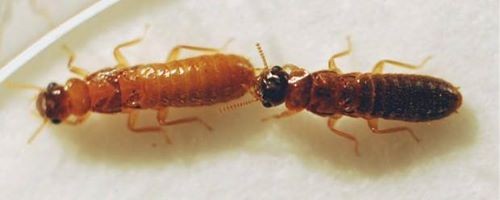South Florida researchers have discovered the breeding of two of the most destructive termite species on Earth. The termite mating has resulted in a fast-reproducing scary hybrid that could expand beyond the state.
The two species are the Asian and Formosan subterranean termites. They are featured in a new paper that was published in PLOS ONE, a journal.
The study's authors revealed that before 2015 the two species had never swarmed together in South Florida, according to Discovery. However, now that the flight seasons of the species are overlapping, the termites have had a chance to date and mate.
Interestingly, the Asian male seems to prefer breeding with the Formosan female. Thomas Chouvenc, one researcher in the study, explains that the result is troubling. That is because the two species' genes have produced hybrid colonies that can develop "twice as fast."
Termites yearly cause $40 billion in damage worldwide. Individually the Asian and Formosan species cause a huge percentage of that figure.
Chouvenc explained that the new hybrid termites could cause significantly more damage to various structures in "the near future." If the termites are fertile, the situation would be worse.
Nan-Yao Su, a professor at the University of Florida, explains that termite colonies can include "millions" of bugs with lifespans up to 20 years. Even if the hybrid species were sterile it would still be a major threat to homeowners.
This is particularly true when colonies show "hybrid vigor." This results in the offspring having more extreme traits than their parents did. They also travel underground and dig up through buildings, according to Sun Sentinel.
Yet another factor is that the two original species individually have no problems going global. So they might travel outside Florida and even the U.S.
Ships and yachts had accidentally transported the original two termite species to South Florida. Their swarming periods might be overlapping now due to global warming.
Su warned that the tip of the proverbial iceberg that the public is seeing is "a big one."



























